Sala10: Mónica de Miranda
virtual exhibition
Path to the Stars
This video is the journey of a heroine from sunrise to sunset in which she is confronted by her own shadow and a multitude of temporalities and narratives. Path to the Stars was shot on the Kwanza, the longest river in Angola. Mónica de Miranda offers us a counternarrative made of interactions between the past, the present and the future: the memory of anticolonial freedom fighters, the uncertainty that dominates present time and the need to belong, that in the future presages a symbiosis with nature in order to prevent ecological crisis and extinction. The vitality and strength of the riparian ecosystem offer us an analogy of the relationships between the body and water in the framework of the history of the Atlantic.
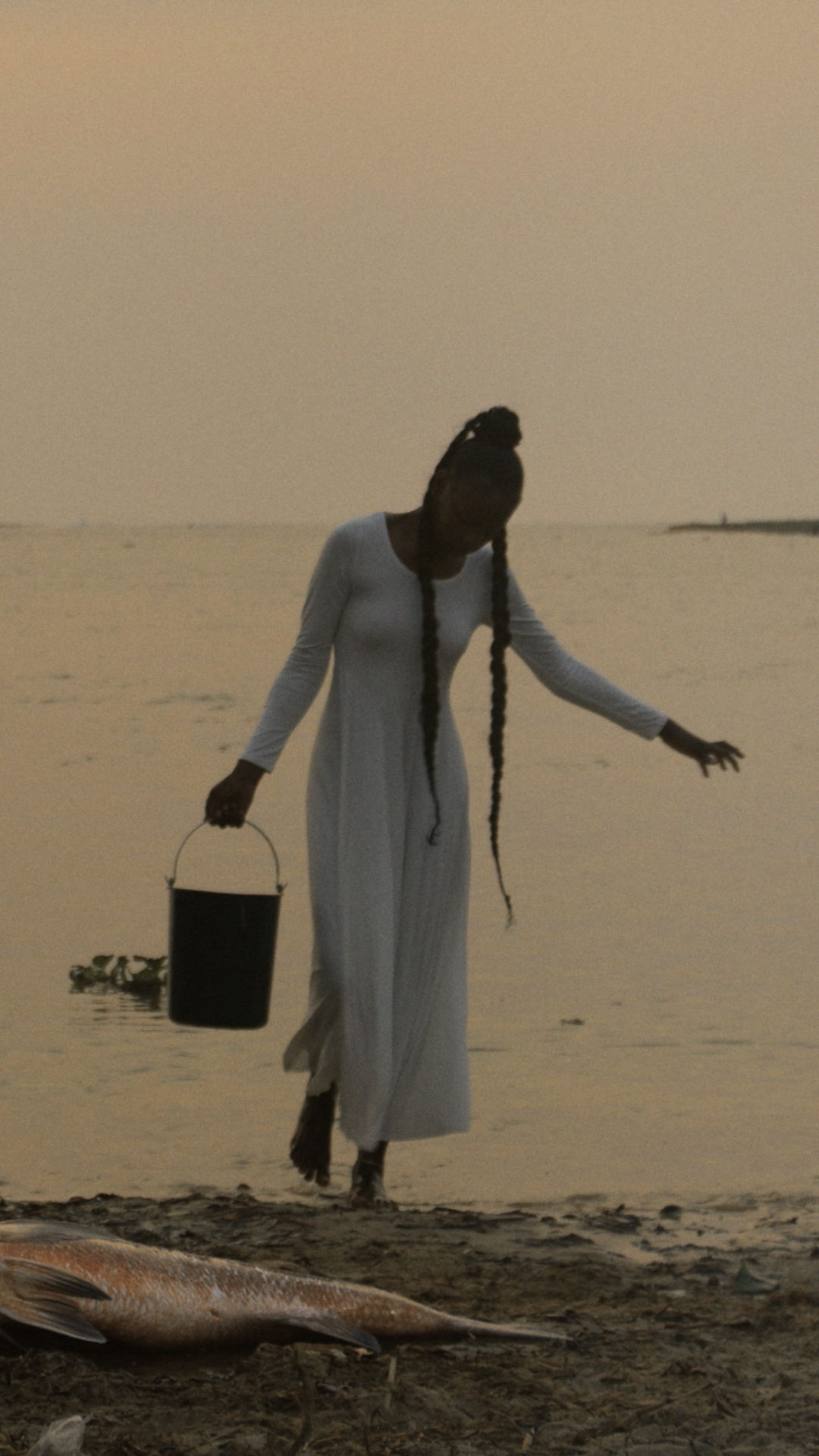
Wipe Your Feet
But this darkness, different from what the eyes see, quivered with colors issuing—as it were—from the very absence of color…
The Abyss, Marguerite Yourcenar
Mónica de Miranda, a Portuguese artist of Angolan ancestry, constantly negotiates the tensions arising from the colonial history between her two countries of origin. De Miranda revisits and reclaims iconic spaces and moments from that history in order to birth them—and, in the process, birth herself—in an affective geography where the shadow of colonial violence and the historiographic processes that accompany it would seem to lack power, and “rigor, truth and footnotes” give way to poetry, dreams, acts of care, ritual and rhythm.
Carlota, the protagonist of this piece, was a combatant in the longest conflict in modern African history: the Angolan Civil War (1975-2002), which—like many other armed conflicts on the continent—arose from the ravages of centuries of colonialism. She died in an ambush the day after she escorted a group of journalists. We know about her because of the chronicle of that war by Ryszard Kapuściński, and because of his reference to her, she is known as “Kapuściński´s Carlota”; being rescued from oblivion can sometimes turn into a kidnapping. To recover Carlota’s life, first we must recover her death.
Path to the Stars perfectly exemplifies the reasons why I abandoned history for the arts. As I ask myself what sort of dream or poem Path to the Stars is, I imagine that it is an attempt to recover Carlota’s stream of life through what she saw just before dying. The mute waters, the new waters, the ancient, deaf, mutilated, rough waters that cure and feed the Cuanza River were the path by which Portuguese colonists reached the Ndongo Kingdom in the sixteenth century, but they also were and continue to be a site of struggle and resistance.
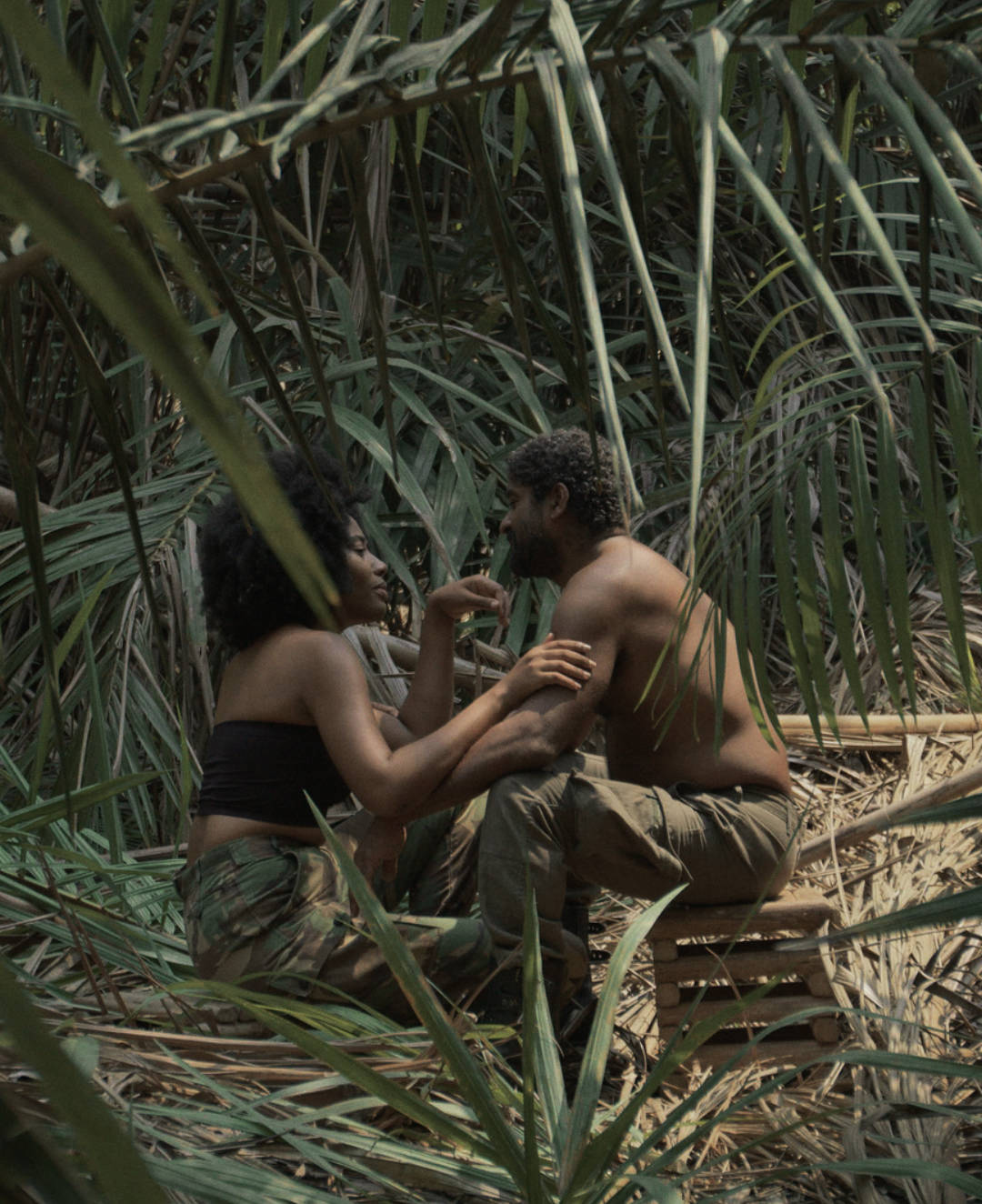
De Miranda’s video is a journey that begins and ends in the sea, after following the course of the river or, and it ends up being the same thing, from inside a fish to the stars. In it, Carlota turns herself inside out and sees herself simultaneously as a girl, adult, old woman, lover, warrior and astronaut, but also as sea foam and cosmic dust that only exists “from time to time”.
I recently read an article about a man who died as they were performing an encephalogram on him and the patterns of alpha, beta, theta and gamma waves that were recorded during his last seconds of life were consistent with those generated when we remember or dream. This accident seems to suggest that the trope of our life flashing before our eyes before we die may have scientific validity [1]. I think that the scenes, landscapes, sounds, characters and objects we see in the video were born—to put it one way—in the increase in gamma waves in Carlota’s brain during the last seconds of her life or, better said, from the distance between her and her absence.
Although she has the habit of immersing herself in the past, De Miranda is aware of the danger of visiting it without the shield of a future. As a daughter of the diaspora and heir to traumas that migrated from another continent, she knows that the desire to reclaim these stories expresses deferred mourning and a sort of exorcism, which are embedded in a negotiation of affect and power with specific space-time coordinates.
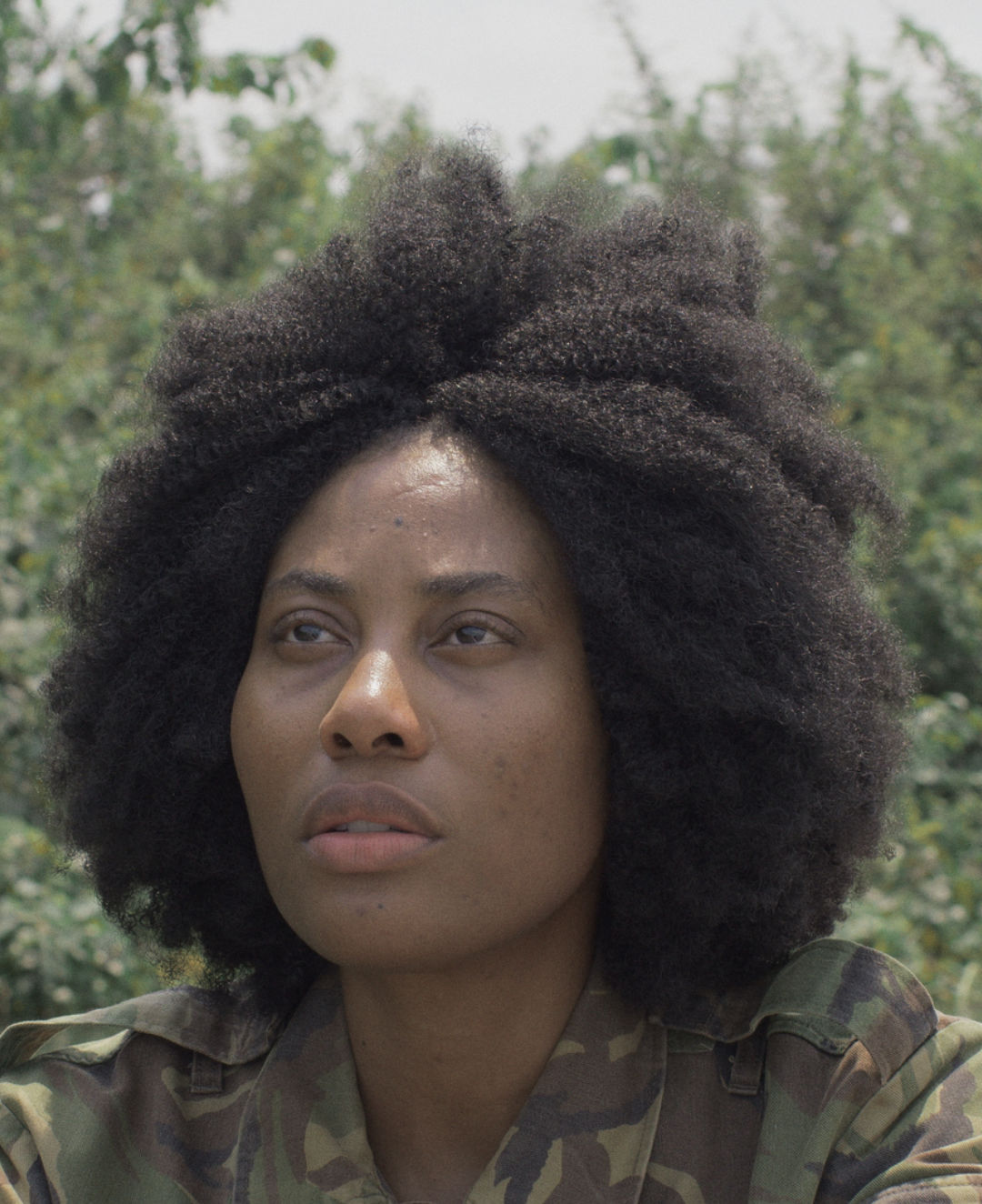
Through Carlota’s dialogues in the video, the artist gives us a self-defense class—with Afrofuturist tinges—against the venoms of the past:
—One must birth oneself.
—The unending landscape is within.
—To listen to little things, one must travel into space.
—Recall not with memory, but with the future.
—What hasn’t arrived yet is infinite.
—The frontiers of hate are imprecise.
—Every time you visit the past, wipe your feet.
The Vietnamese writer Ocean Vuong interprets the Asian custom of taking one’s shoes off before entering a house not as a hygienic measure, but as a gesture of care and respect: “I’m going to take off my shoes to enter something important.” Vuong translates this gesture to other practices, such as moderating his voice when giving classes or speeches: “I want to take off the shoes of my voice so that I can enter a place with care, so that I can do the work that I need to do.”[2] Rescuing Carlota is an act of care for the dead, just as it is one of self-healing. De Miranda takes off her shoes before entering Carlota’s house and doesn’t forget to wipe her feet before leaving.
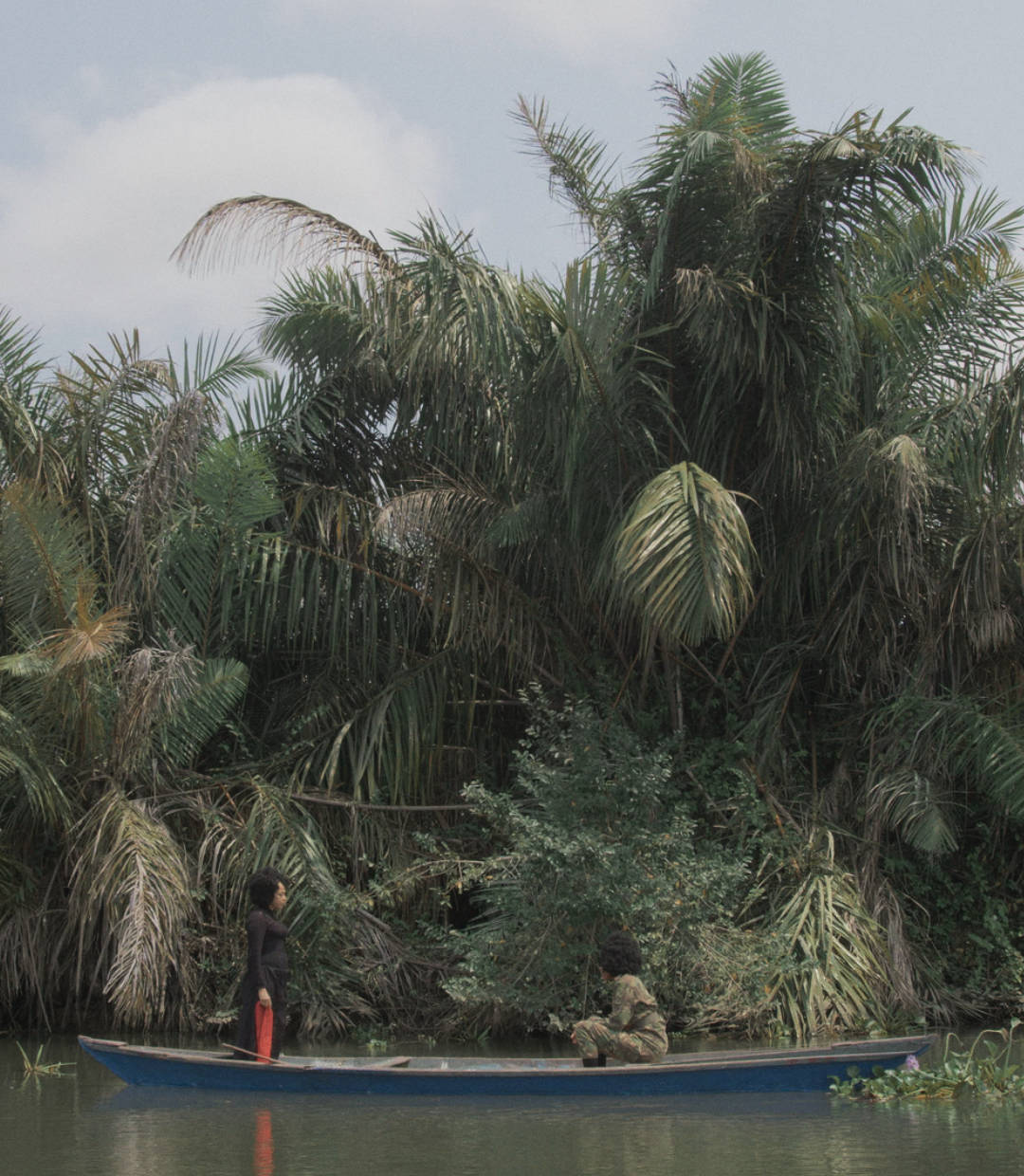
The script is constructed through a series of references and direct quotes from other texts, including the title, which it shares with a poem by Agostinho Neto, the first president of Angola. There are concrete historical allusions: the cold groanings, the bomb, the Chinese astrological map and the date of the communist revolution. Nevertheless, what Mónica de Miranda’s maps measure are the distances between awareness and darkness, between hatred and liberation, between destructive semen and union with nature.
The poem is an oral animal, a declamation that marks a rhythm. Before the era of writing and history, poetry reigned through orality. Rhythm was our technology for remembering. De Miranda cannot escape from the use of a colonial language in her attempt that Carlota’s little things continue to be audible and become stars, but she has ensured that the words sing:
And she rose up as an animal…
And she sewed her soul to the nocturnal hemispheres.
This is all we can know of Carlota’s death.
Alejandra Labastida Escalante
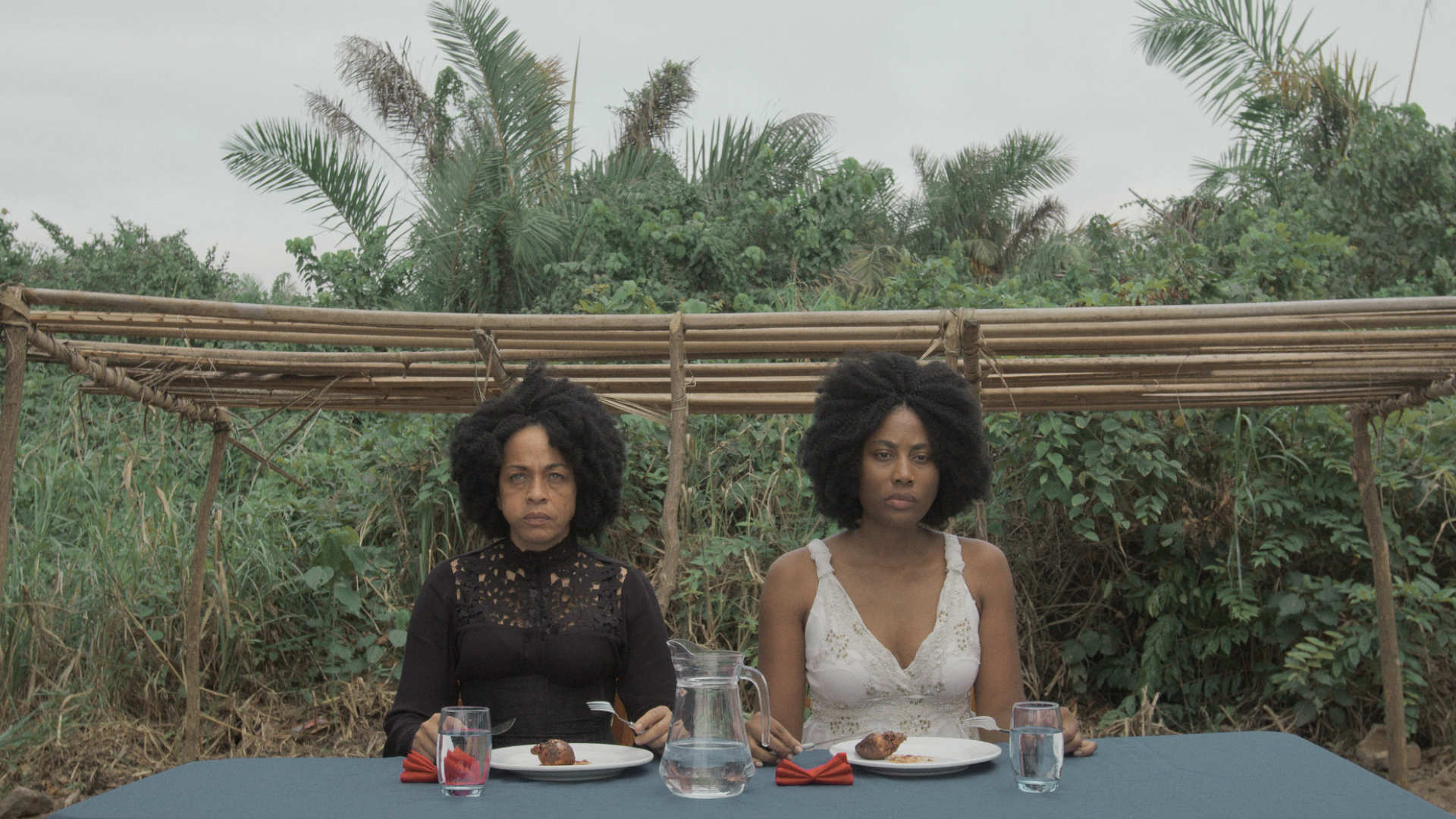
[1] Elaine Velie, “Science confirms That Life Flashes Before the Eyes Upon Dead”, Hyperallergyc, April 4, 2022. Available at: https://hyperallergic.com/720694/science-confirms-that-life-flashes-before-the-eyes-upon-death/
[2] Krista Tippett, “Ocean Vuong. A Life Worthy of Our Breath”, Podcast: On Being with Krista Tippett, June 16, 2022. Available at: https://onbeing.org/programs/ocean-vuong-a-life-worthy-of-our-breath-2022/
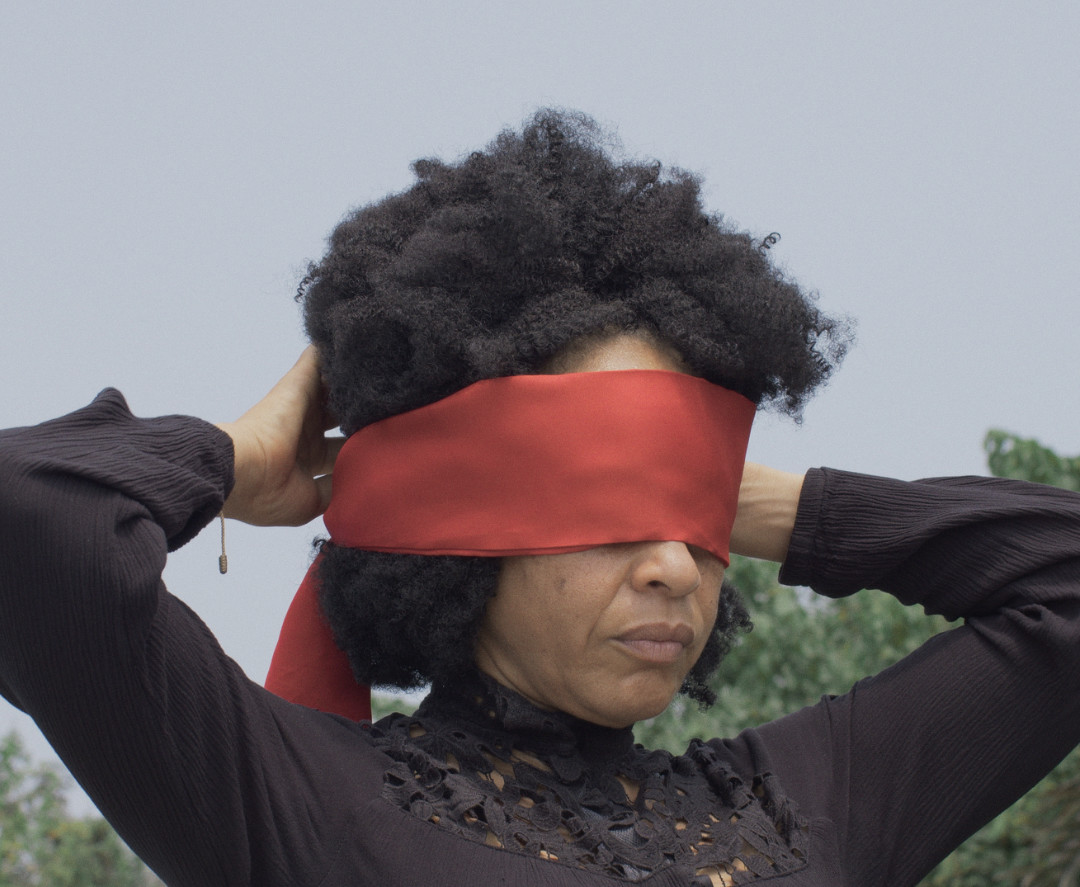
Path to the Stars
Marissa J. Moorman
Path to the Stars follows a river. The river Kwanza. The film itself is river-like, drawing from many sources but cutting a path all its own. Combining, in equal parts, film’s cinematic and theatrical aspects, Path to the Stars plots a story of Angola’s liberation struggle on the river and in the words spoken by Carlota, a guerrilla fighter, a woman, never named but embodied by actor Renata Torres.
[...]
COMPLETE TEXT HERE
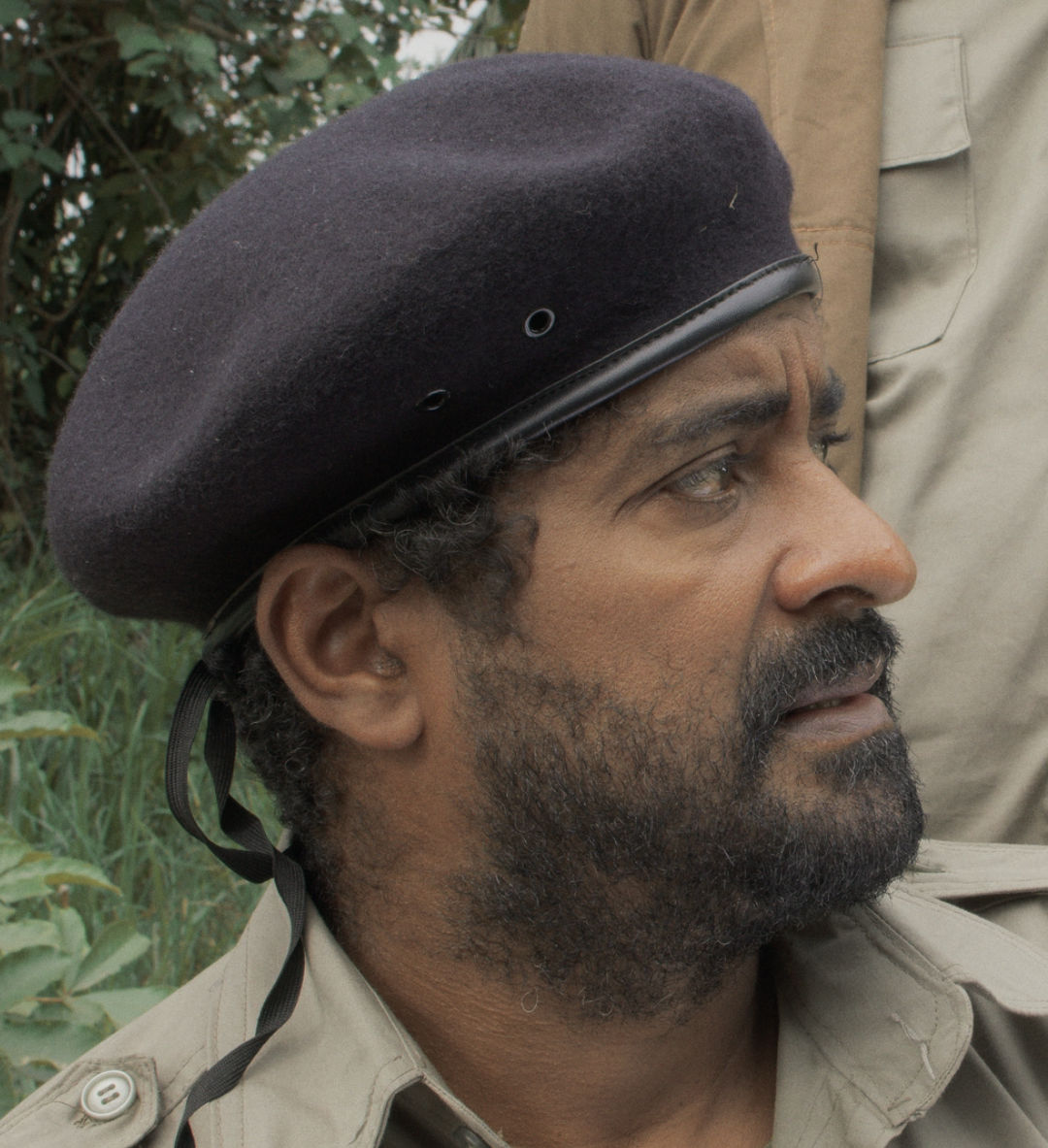
Mónica de Miranda
Path to the Stars, 2022
Video HD with sound, 34’41”
Courtesy of the artist and Sabrina Amrani
Mónica de Miranda (1976, Oporto; lives and works between Lisboa and Luanda)
Mónica de Miranda is a Portuguese artist of Angolan origin. Filmmaker, artist and researcher, her work is based on themes of urban archaeology and affective geographies. She works in an interdisciplinary way with drawing, installation, photography, film, video and sound, in its expanded forms and in the boundaries between fiction and documentary. She is graduated in Visual Arts and Sculpture from Camberwell College of Arts (London) and PhD in Artistic Studies from Middlesex University (London). She is one of the founders of the Hangar project (Artist Residency Centre, Lisbon, 2014). Her work is represented in several public and private collections, including: Calouste Gulbenkian, MNAC, MAAT, FAS, Centro Cultural de Lagos, Photographic Archive of Lisbon.
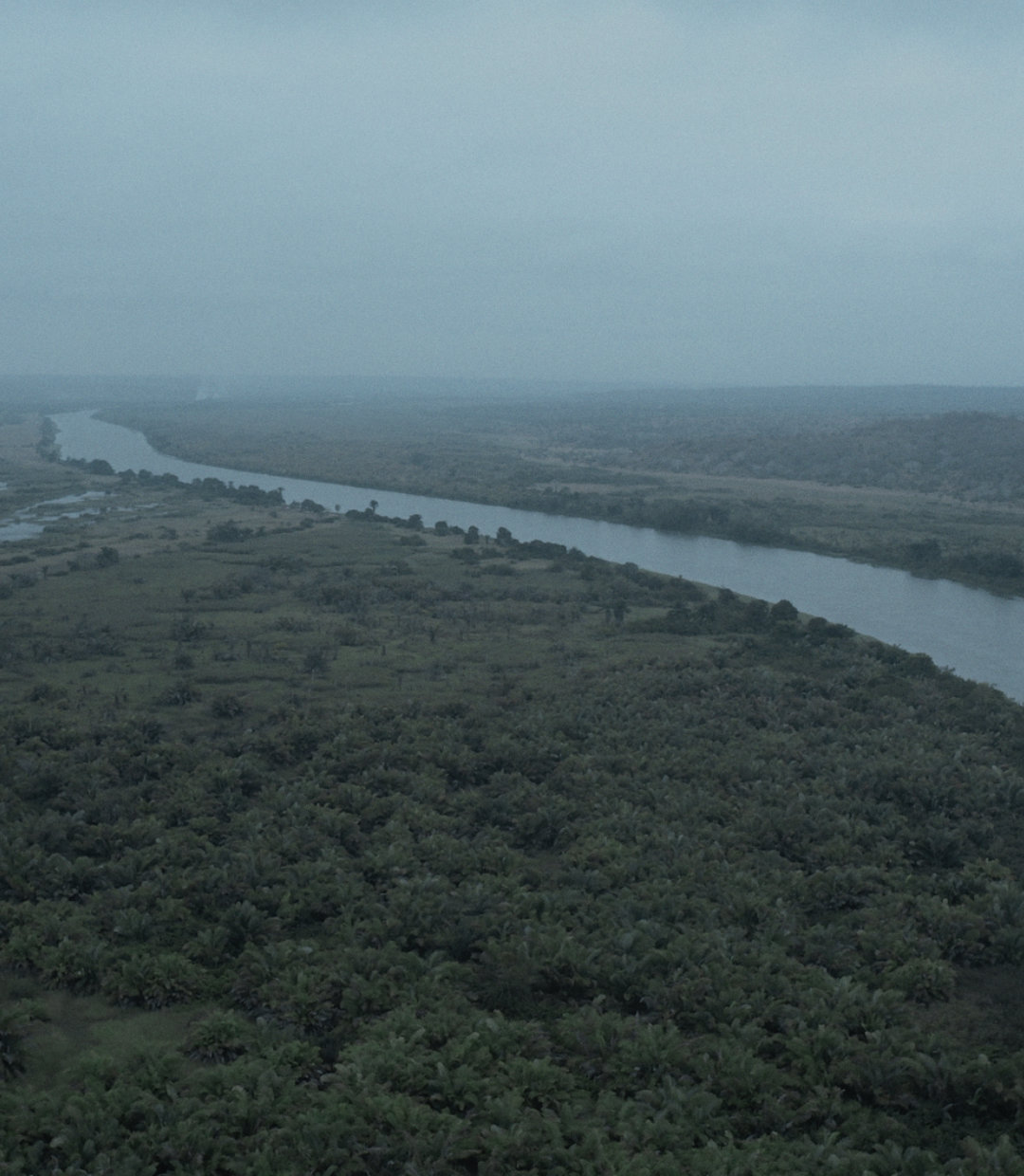
Curatorship: Alejandra Labastida Escalante
Texts: Alejandra Labastida Escalante, Marissa J. Moorman
Content Direction: Ekaterina Álvarez Romero, Cuauhtémoc Medina
Curatorial Coordination: Ana Sampietro, Mariel Vela García
Digital Management: Ana Cristina Sol Sañudo
Content Editing: Roberto Barajas Amieva, Vanessa López García, Yerem Mújica Toscano
English Translation: Julianna Neuhouser
Spanish Translation: Luis Alejandro Maciel Ortiz
Press: Francisco Domínguez Morales, Eduardo Lomas


